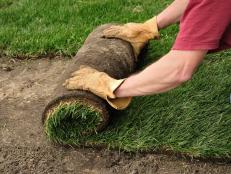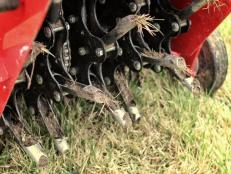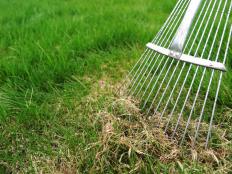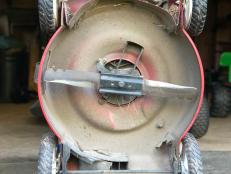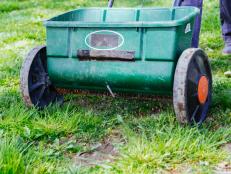Try a Meadow as a Lawn Alternative

More than 75 percent of all residential land is covered in turfgrass. Yet, keeping a thick green carpet of freshly mowed turf year-round isn't very realistic when you consider things like weather, weeds, pests and the use of chemicals. One natural alternative is a low-maintenance natural meadow. Meadow lawns require less water and can be planted just about any place you'd put a groundcover.
Why plant a lawn that needs to be mowed 40 times a year when you could have a type of lawn that needs to be mowed four times a year, says alternative grass guru John Greenlee. "You don't need to be a rocket scientist to understand that then you've got more time to do other things, like gardening."
Save Money, Time and Resources
Meadow lawns are more expensive to plant than sod initially because many native grasses are difficult to grow from seed and thus potted plants are necessary. "Lawn is the cheapest thing to plant but it becomes the most expensive thing in the garden to maintain. So once you've planted a meadow, you'll get your money back (usually within the first year) from reduced maintenance, reduced water, fertilizer and all of those other things that a lawn requires."
And meadow lawns are easy to maintain. Keep a nice, manicured look on this alternative lawn by using clippers, a string trimmer or a mower once every three months. If you don't want to do this level of maintenance, cut the lawn at least once a year to help warm the soil and invigorate new growth.
There are several plants that work well as lawn alternatives. An important thing to remember is that all the plants will share the same light and water requirements, so select plant material accordingly.
- Sedges are members of the Cyperaceae family, which is closely allied with true grasses. They make excellent lawn substitutes for their easy care and lack of messy flowers. Greenlee likes to use the evergreen Texas meadow sedge in his California garden.
- Autumn moor grass (Sesleria autumnalis) has a compact, mounding habit and reaches about 12 to 18 inches tall. It turns a silvery color in fall. Drought-tolerant.
- California meadow sedge (Carex pansa) is a creeping native sedge that grows only 4 to 6 inches high. It's tolerable of foot traffic and a variety of soil conditions, including sandy and heavy clay soils. Plant in full sun to partial shade.
Plant Your Own Meadow
Begin with a rich topsoil and apply an organic fertilizer. Then select your plant material. Low growers, like Carex pansa, need less mowing than taller grasses. That will enable you to introduce other plants into the landscape. For example, consider adding color, such as flowering Nemesia and coleus, or edible fruit, like white alpine strawberry (Fragaria vesca), for a little something to eat.
When planting, plant no deeper than the height of the rootball. Apply a layer of mulch to help control weeds and conserve moisture until the plants have gotten established. Then fertilize and water well. "Grasses love nitrogen, and if you really want your meadow to fill in, fertilize every four weeks. Once it's filled in, you won't need to fertilize again.
"The whole idea of a meadow is that it is gardening in partnership with nature. Creating a meadow is a lot easier on the planet than a lawn. No mowing or blowing and it uses a lot less water," Greenlee said.








